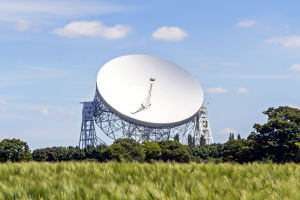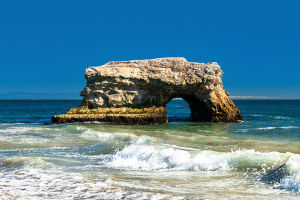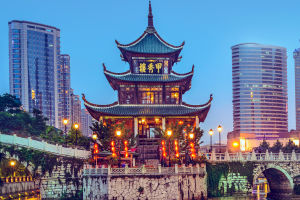If you’re looking for a winter adventure near Seattle, Snoqualmie Pass is the perfect destination! This picturesque location in Washington’s Cascade Mountains offers everything from skiing and snowboarding to hiking and sightseeing.
Whether you're an adrenaline seeker or someone who enjoys a peaceful escape in nature, Snoqualmie Pass has something for everyone. Let’s explore the details to make your trip unforgettable.
Location and Getting There
Snoqualmie Pass is located about 50 miles (80 kilometers) east of Seattle, making it a perfect day trip or weekend getaway. The easiest way to reach Snoqualmie Pass is by car, taking Interstate 90 East. The drive typically takes around 1 hour, depending on traffic and weather conditions. Be sure to check road conditions, especially in winter, as snow and ice are common. If you're driving during the winter, make sure your car is equipped with snow tires or chains, as the pass can be snowy and icy.
For public transport, you can take a bus from Seattle to North Bend and then a short taxi ride to the pass, but driving is generally more convenient for those with rental cars.
Winter Sports and Skiing at Summit at Snoqualmie
The Summit at Snoqualmie is the main ski resort in the area, offering an amazing variety of snow activities for all levels. It is the closest ski resort to Seattle, making it easily accessible for both locals and tourists.
Skiing and Snowboarding: The resort has 62 runs and 4 areas to explore: Alpental, Summit West, Summit Central, and Summit East. The slopes range from easy to expert, with Alpental being the most challenging for advanced skiers.
- Ticket Prices: Lift ticket prices range from $70 to $130 per day depending on the time of the season. Discounts are often available for multi-day passes, children, and seniors.
- Opening Hours: The ski resort typically opens in late November and closes around April. Daily operating hours are from 9:00 AM to 4:00 PM, but these hours can vary during peak seasons, so always check ahead.
- Rental Equipment: Ski and snowboard rentals are available at the resort for around $40 to $60 per day.
Snowshoeing and Cross-Country Skiing: If you’re looking for a less intense way to enjoy the snow, snowshoeing and cross-country skiing are fantastic options. Trails are well-marked and offer beautiful views of the surrounding mountains and forests.
Best Time to Visit Snoqualmie Pass
The best time to visit Snoqualmie Pass depends on what you’re looking for:
Winter (December to March): This is the peak season for skiing, snowboarding, and snowshoeing. Expect good snow coverage and plenty of activities, but be prepared for crowds during weekends and holidays. The snow conditions are ideal during this period, making it perfect for winter sports enthusiasts.
Spring and Summer (April to September): For those who prefer milder temperatures and fewer crowds, spring and summer are excellent times for hiking and outdoor exploration. The trails around the pass are open year-round, and the views in the warmer months are equally stunning.
Popular Trails and Hiking
Snoqualmie Pass offers a range of hiking opportunities, from easy walks to more challenging mountain treks. In spring and summer, the area’s lush greenery and wildflowers make for a perfect hiking experience.
- Snoqualmie Pass Trail: This 2.5-mile (4 km) easy-to-moderate trail is a great way to enjoy the natural beauty of the area, especially in spring and summer.
- Rampart Ridge Trail: For more experienced hikers, this 4-mile (6.4 km) trail offers a higher elevation with fantastic views of the surrounding mountains.
- Hiking Tips: Be sure to bring plenty of water, wear sturdy shoes, and dress in layers, as mountain weather can change quickly. In the winter, trail conditions can be icy, so bring crampons or traction devices.
Local Attractions and Scenic Spots
While Snoqualmie Pass is primarily known for its outdoor activities, there are also a few local attractions worth visiting.
Snoqualmie Falls: Just a short drive from Snoqualmie Pass, this 268-foot waterfall is one of Washington’s most famous natural landmarks. It’s a stunning sight year-round, but especially beautiful in winter when the water freezes into icicles. There’s a park with an observation deck, and it’s free to visit.
Snoqualmie Pass Historic District: This area offers a glimpse into the history of the region, including old railroads and vintage buildings. It’s an interesting stop if you're looking to learn more about the area’s past.
Where to Stay Near Snoqualmie Pass
If you’re planning to stay overnight, there are a few lodging options near Snoqualmie Pass:
- Summit Inn: Located just a short distance from the ski resort, Summit Inn is a convenient and affordable option for those looking to stay close to the slopes.
- Alpental Ski Lodge: For a more rustic experience, Alpental Ski Lodge offers cozy accommodations in the heart of the mountain.
- Airbnb: For those looking for something more private or unique, you can also find cabins and vacation homes in the surrounding areas.
Practical Tips for Visitors
Here are some useful tips to help make your visit to Snoqualmie Pass more enjoyable:
1. Weather: The weather in the mountains can be unpredictable. Always check the forecast before heading out and pack accordingly.
2. Snow Chains: If you’re driving during winter, it’s essential to carry snow chains, especially if road conditions are poor. The Washington State Department of Transportation may require chains in certain conditions.
3. Parking: During the peak season, parking can be limited, especially on weekends. Arriving early in the morning can help you secure a spot.
4. Food and Drink: There are a few restaurants and cafes in the resort area, but you may want to bring snacks, especially if you're heading to the trails for a day of adventure.
Plan Your Snoqualmie Pass Adventure Today!
Snoqualmie Pass offers an unforgettable experience for those seeking adventure and relaxation in the stunning Cascade Mountains. Whether you’re enjoying thrilling winter sports, exploring scenic hiking trails, or simply immersing yourself in the natural beauty, the Pass provides a perfect getaway.
We hope this guide helps you make the most of your visit, and we look forward to hearing about your own Snoqualmie Pass adventures.
See you on the slopes or the trails, Lykkers! Safe travels!


